Since Heart2Heart started in 2003, readers have very often written to us seeking answers to many spiritual questions. We have answered them at times through appropriate articles in H2H. However, there are still many that have to be explained carefully and in detail. And in the recent past, a lot more queries have arrived on varied topics concerning spirituality and personal growth.
We have now meticulously compiled and categorised these questions, and Prof. G. Venkataraman has offered to answer all these queries in a structured and systematic way as a series on Radio Sai as well as in H2H. In this way, these answers now remain always on our website as a ready reckoner on spiritual doubts. This is a suitably adapted transcript of our radio series bearing the same name. To listen or download the talk from our website, please visit
www.radiosai.org/qaLoving Sai Ram and greetings from Prashanti Nilayam. If you recall in the previous article, I ended discussing a question related to the topic of Spiritual transformation. In the present article we continue with that topic, and take up the next series of questions related to that same theme. There are four questions that are in some way related to each other, and they are as follows:
a) Is information necessary for transformation or can transformation come about without information?
b) How can we use information effectively to spiritually transform ourselves?
c) Can too much information hinder our spiritual transformation?
d) How is knowledge different from Wisdom?
Let me start with the first one that deals with the connection between Spiritual transformation and what the questioner refers to as information.
Frankly, I do now know what the questioner means by the word “information”. If by that he means information technology, or IT as it is referred to these days, then my short answer is that IT is not really required to achieve Spiritual transformation. In fact, in the days when IT did not exist, we had more of saints and sages than we have now. And that is because, IT by its very nature, easily deflects our attention from the inside to the external world. That said, IT is not always a curse.
For example, our radio and video streaming services go all over the world, thanks to IT. Our Heart2Heart reaches out similarly entirely through the use of IT, and so on. So, the fault is not in IT per se, but in the manner in which people tend to use it most of the time. Since misuse is more common than good use, it may be safer at least until one is well set on the road to transformation, to go by the traditional, tried-and-tested methods of old.
Thus far, I have equated the word information with IT. The question arises: “What about the pre-IT era? Did not information exist without modern IT then?” This is a good question. If by information one means “captured knowledge” then information did exist in previous times also, and the good part of such captured and codified knowledge has always been of use.
Let me give some obvious examples, starting with the Vedas. Long before writing was invented, in ancient India, Vedic knowledge was passed on from generation to generation simply by word of mouth; the Guru chanted the hymns for hours on end and the disciples would repeat them after the Guru. In this way, through the process of repetitive hearing, they memorised thousands of hymns.
Later, after the verses have been duly committed to memory, the Guru would explain the meanings and the subtleties and that was when Vedic information earlier encoded in the brain became elevated to Vedic or scriptural knowledge. Subsequently, when writing evolved and finally when printing was invented, it became much easier to absorb information and internalise it.
There is then the question whether too much information can be detrimental. My personal feeling is that for a true seeker, this would indeed be the case. Let us take reading the puranas or old epics as an example. Although Indians consider the Ramayana and the Mahabharatha to be the two principal ones, there are in fact many others. And if one reads them all carefully, one would find many apparent contradictions between the different versions.
Atmaabhimanam involves, among other things, developing virtues that God exemplifies. And what are those virtues? They include compassion, forbearance, equanimity, etc., all of which are natural consequences of strict
adherence to Sathya, Dharma and Prema. |
A profound scholar would no doubt be able to resolve all these, but why invite trouble? Better to keep it simple, in which case, life becomes easier; all one has to do would be to follow the so-called Golden Rules. However, some in-depth reading of the Ramayana or the Life of Swami - and I stress the word in-depth - would help a lot when one is confronted with sticky situations. In all such cases, by examining what Rama or Swami did under similar circumstances, or for that matter Jesus or Buddha, one can find solutions.
Finally, what is the difference between knowledge and Wisdom? This is a very good question. If all that one has read, say of the scriptures, is simply encoded into our personal hard disc called the brain, then it simply remains as knowledge at best. Wisdom is that which enables one to tap this knowledge selectively and as appropriate for each situation, and apply what is extracted in the proper manner.
Let me give a practical example. Swami constantly says: Help ever and hurt never. These days, a good many of the people who show up for Seva in the Ashram are blissfully ignorant of even the basic teachings of Swami, as a result of which, they are more tuned to what they regard as rules given to them to be enforced, rather than for using the opportunity of Seva for self-improvement.
As Swami tells us so often, knowledge and skill alone are not enough. Something extra is required; that extra is spiritual discrimination, which is Buddhi. Buddhi becomes honed only when we make serious efforts to internalise the teachings of Swami and not merely turning the pages in the name of reading.
Let us now turn to other questions we have relating to Spiritual transformation. They are as follows:
QUESTION 1: Does spiritual transformation include transformation of the way we dress? If yes, why? And if no, why do we practice it? And why is it more restricted for females? Isn’t this discrimination?
QUESTION 2: Should sensitization/transformation begin from the upper class or the lower class? Which segment should take the first step?
Let me start with the first of the two above questions. It has many parts, and basically it raises three issues: Firstly, does spiritual transformation have any connection with the way one dresses, yes or no? Secondly, if discipline in dress code is mandatory, then why it is so? Thirdly, why special regulations for females? Does this not amount to gender discrimination? On the whole, a good question and it is very relevant to present times.
I think the best way of responding is to start by reminding ourselves what exactly the word transformation means; remember, this word is used in a Spiritual context, that is to say, transformation is a process related to the Spiritual evolution of the individual. Why does one aim at Spiritual transformation? Because, that alone enhances our eligibility to become one with God.
Transformation is a process related to the Spiritual evolution of the individual. Why does one aim at Spiritual transformation? Because, that alone enhances our eligibility to become one with God. |
Remember, God has given us the human form to make it easy for us to become one with Him. And why is such a union important? Because it is union with God alone that would confer permanent Bliss, not worldly attractions. We have gone through all that before and I hope these remarks would help to establish what I might call the baseline.
From all that I have just now said, it should be clear that Spiritual transformation is something that everyone without exception must seek. So what does this tell us? It tells us that a) transformation is mandatory for all, and b) there is no gender bias, that is, both males and females, each perhaps in their own respective ways, ought to make going back to God an important, if not the principal, goal of their lives.
This now bring us to the question of dress, who should dress in what manner and so on. I believe in my previous article I told you that transformation implies a progressive Spiritual evolution. Reduced to brass tacks, it means shifting one’s focus from body-consciousness or Dehaabhimaanam, to God-consciousness or Atmaabhimaanam. I have commented upon all this in my last article and so I shall skip further explanation here. Let me just say that developing Atmaabhimanam involves, among other things, developing virtues that God exemplifies. And what are those virtues? They include compassion, forbearance, equanimity, etc., all of which are natural consequences of strict adherence to Sathya, Dharma and Prema.
God has given us the human form to make it easy for us to become one with Him. And why is such a union important? Because it is union with God alone that would confer permanent Bliss, not worldly attractions. |
You might ask: “Can not one have Dehaabhimaanam and still exhibit Prema, that is Pure or Selfless Love?” Not really. Why? Because the moment one has body-consciousness one would tend to be partial to things related to oneself in some manner or the other. If you think about it, most of the problems we see in the world arise because of this one factor, everything from price gouging or excessive profiteering, to cheating on taxes, all the way to war over disputed territory.
Perhaps you are beginning to think that I have lost my way; not at all. Let me briefly recap what I have said thus far before I proceed further.
- In our context, transformation is a process connected to Spiritual evolution.
- The key element of this transformation is to change one’s perspective from body-consciousness to the attitude that one is essentially Divine at the core; the latter viewpoint is called Atmaabhimaanam, and essentially means unconditional Love for God.
- A person guided by Atmaabhimaanam would never exhibit selfishness and give preference to his or her relatives in any matter whatsoever. That is a key point.
- Another way of explaining what Atmaabhimaanam is all about is that God or the Atma becomes priority number one, above everything else.
With this background, let me now proceed to the main issues raised in the question that I brought to your notice earlier. Does the way one dresses have anything to do with Spiritual transformation, Aatmaabhimaanam etc? Not directly I would say, since people of different cultures have different types of dress, often connected with the climatic conditions of the regions where they live. For example, one cannot expect a person in say Chennai to dress like an Eskimo – that is obvious. However, the dress code does have something to do with transformation. The question now becomes: “In what way?”
 |
Dress is something everyone wears. However, the manner in which one dresses does vary considerably. While some dress in a simple manner, others prefer to dress fashionably and even in a flamboyant manner. Why? In order to attract attention to themselves, to be taken notice of, to catch the eye of others, etc. All of these are directly related to body-consciousness; in other words, when what one wears [like expensive clothes] or the manner in which one dresses [like in a deliberately provocative manner], - when these matters are dictated by ego, it means one is in the grip of Dehaabhimaanam, which, as I told you earlier, is not recommended. Thus, in this sense, if one is dressing simply to show-off, then it is clearly not consistent with trying to become Spiritual. I hope that is clear.
 | |
| |
|
I now turn to the issue of dress code for females, in particular to what is referred to as restriction and implied discrimination. I hope it is clear from what I said earlier that dress restriction applies as much to males as to females, which automatically implies that dressing in a manner that is provocative, is to be avoided by all persons, both male and female. Why? Because dressing in a flashy or provocative manner is directly related to being conscious of one’s bodily charms. That feeling, as I told you, arises entirely on account of body-consciousness. Where spiritual transformation is concerned, body-consciousness is strictly ‘No’, ‘No’. I am sure many lady listeners, especially those who are young, as I suspect the questioner must be, would disagree with me, and even argue that I have got it all wrong. So, let me add something more, by way of explaining myself.
In Creation, it so happens that where humans are concerned, it is the male who is easily attracted to the female of the species rather than the other way around. This is the way Nature has ordained, and so we should simply accept it. Having done so, one must then make sure that this attraction does not lead to untoward and even alarming situations or incidents. By the way, it is because that attraction is predominantly one-sided, that the Devas sent two pretty damsels, first Menaka and then Ramba to disturb severely Sage Viswamitra when he was engaged in deep tapas.
It is also to be remembered, that when it comes to gender-related assaults and crime, it is almost always women who get attacked while the assailant is almost always a male – this is common knowledge. This being the case, in olden times there was a universal consensus that women shall dress modestly. This might not have been entirely motivated by profound Spiritual considerations such as I discussed earlier. Nevertheless, all things taken together, modesty was definitely a part of social etiquette in India as much as in Victorian England; and there was a definite reason for it.
Today, such considerations are regarded as discriminatory restrictions that large numbers choose to disregard. This trend, needless to say, receives tremendous encouragement from the media, which is evident from the liberal use the media makes of provocative female charm in its advertisements. As crime statistics clearly demonstrate, no matter how much it denies, the fact remains that media’s attitude, driven primarily by its desire to make money, has not helped society.
Some people argue: “This is all wrong. We have the right to dress the way we want. That does not give others the license to assault us.” On paper, this might sound like a valid argument. However, one has to accept the grim realities of real life. When something seemingly desirable is heavily advertised, it creates desires in those who want it but cannot attain it. It is not merely in the gender issue. Whenever a party flaunts something [it could be wealth for example], someone else wanting that which is being flaunted is likely to break Moses’ commandments; that happens all the time, thanks to downplaying sense and Mind control.
Wisdom is that which enables one to tap this knowledge selectively and as appropriate for each situation, and apply what is extracted in the proper manner. |
Let me sum up all the above via the following questions and answers:
Question: Does Spiritual transformation include transformation of the way we dress?
Answer: Not directly, but since transformation implies shedding body-consciousness, the dress that we wear must clothe us but not boost our ego in any way, including inviting special attention, either directly or indirectly.
Question: Why is it more restricted for females?
Answer: Actually, historically the conservative dress code was recommended for females, since modesty was considered a desirable virtue for women. However, if Spiritual considerations are brought in, the importance of proper dress code for women begins to make real sense. And, to complete the answer, there is no discrimination implied, because Spirituality as such rises above gender; what is recommended is a useful practical tip.
In this context, it is useful to recall an incident that goes way back to 1941, a year after Swami had declared that He was the Avatar of the Age. At that time, Swami had just made Puttaparthi His base, and He did not even have an Ashram. He was staying in the house of Karnam Subbamma, celebrated in His Story as the Yasoda of the Kali Yuga.
 | |
| |
|
There came then to Puttaparthi a Sannyasi who belonged to a special group known as Digambaras. The members of the group were supposed to be so far above body-consciousness that they never wore any clothes. What happened then has been recounted by Kasturi, and it is interesting to look back at what he wrote:
“The town of Bukkapatnam [which then was the town nearest to Puttaparthi] was all agog with the visit of this ascetic, an aged man, who had lost the use of both his legs, who had discarded dress, and therefore was looked upon by the masses as a triple example of sagehood. His admirers were eager to watch the reactions of Baba, when pitted against a veteran of many hardships.
The Digambara Swami had taken also a vow of silence and so, the curiosity of the people became greater. The sweet little Divine Child met the hefty hero who was carried to the village and deposited in front of the Karnam's House. Baba gave the unclothed Sage a big towel (!) and some advice, the like of which he would not have got anywhere else.
‘If you have cut off all relationship with Society, as your nakedness indicates you have, then why do you not go to a cave in a forest away from human society? Why are you afraid? On the other hand, if you have a craving for disciples, for name, and the food available in cities and towns, why do you allow yourselves to be mistaken for a man with no attachment?’ These were the words that fell from the young Baba. They struck every one with wonder and admiration.
The Digambara Swami looked crestfallen, for he was evidently not sincere enough to act up to his 'nakedness' and his mounam or silence!
But, Baba was not sarcastic; no, far from it; He was ready to help, to assure, to guarantee! He said, patting the cripple on the back, ‘I know your difficulty.You are afraid you may not get food and shelter if you retire from the company of men, is it not? Well.
I assure you, anyone taking the name of the Lord, wherever he may be, will get his food. I shall see to that. You may be in the deepest Himalayas or the thickest Dandakaranya, I shall give you food regularly there! But, if you have not that Faith and that Courage, you can meditate on Him here itself; then, don't wander about naked, and give all this bother to these people to carry you about from place to place.’ What a grand teaching that! If only people would grasp its meaning! That was the Authentic Voice; only an Avathar could give that Assurance!”
That story sums it all up, does it not? At the very highest level, Spirituality rises so much above the body, where is the question of dress figuring at all? But when we are in the very first stages of the long journey, when the stress is all about turning our attention away from the body, it is a useful discipline to make dress a functional requirement that covers the body in a manner that not only takes care of the body itself but in addition does not disturb others by attracting attention in one manner or the other. Remember, for an action to be truly Dharmic, it must not in any way disturb others. Hope it is all clear.
There is one more question that I must deal with before signing off this article and that is the following:
Should sensitization/transformation begin from the upper class or the lower class? Which segment should take the first step?
If we go by what the practice was in the olden days, I would say that Sathya and Dharma are important for all without exception. That said, the exposure to these values could be done in ways that are different and best suited for the segment addressed. That should be obvious. As for who should take the first step, I would say clearly it is the more enlightened who should take the first step.
| | 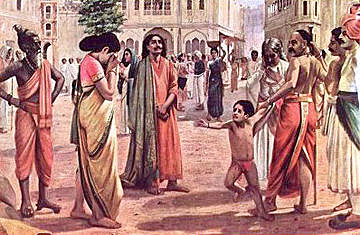 |
| | A scene from the life of Sathya Harishchandra who did not hesitate to forsake his wife and child for the sake of truth (Sathya) |
Since the so-called upper class has many advantages in terms of education, ability to reach out, etc., it is clearly its responsibility to take the first step. Thus it is that in the olden days, it is the scholars who wrote the puranas that made the Vedas come alive with examples.
Taking the cue, other scholars took it down to even lower levels via folk music, village drama, folk art etc., so that even ordinary people who were unlettered could know something about Sathya and Dharma. Let us not forget that as a young boy, seeing a folk drama on Harishchandra changed entirely the life of that boy in such a manner that he became a household name the world over for truth and justice – I am of course referring to Gandhi.
I hope that makes clear the answer to the last question of the day. With that, I sign off, and hope you found this article useful and would care to join me again for the next instalment.
God bless, and Jai Sai Ram.








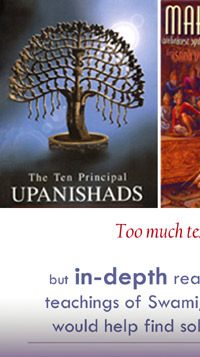
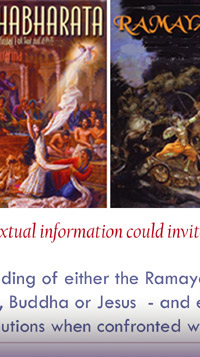
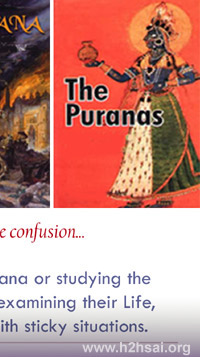
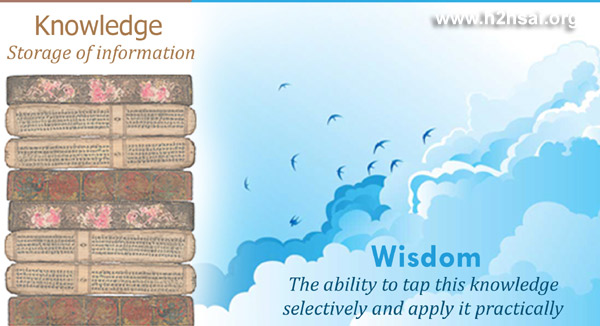


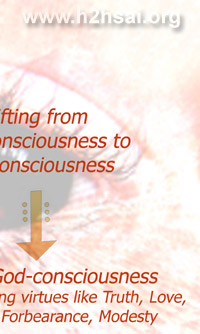



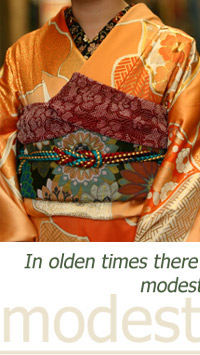
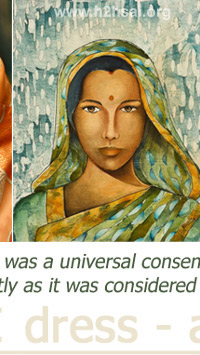
























No hay comentarios :
Publicar un comentario